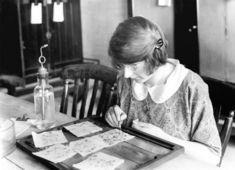
England’s Official Seed Testing Station (OSTS), based at the National Institute of Agricultural Botany (NIAB) in Cambridge, has just reached its 90-year milestone.
NIAB’s laboratories play a key role in promoting seed quality and introducing new plant varieties in support of UK agriculture, by ensuring high standards are maintained through the use of fit-for-purpose seeds.
The rationale for OSTS is as relevant today as it was when it was formed, in 1917. During the First World War
(1914-1918), there was an urgent need for increased home food production, and this resulted in new legislation requiring seed
to be tested for purity and germination before use.
Today, global concerns about the impact of climate change on crop production mean that these challenges still very much exist. Seeds are stringently scrutinised and approved for certification following EU directives. The technical protocols followed have been developed by the International Seed Testing Association, of which the OSTS is a member, and strives to establish uniformity in seed testing worldwide.
Originally based in London, NIAB has been at its current site since 1921.The laboratories are the designated OSTS for England and Wales by Defra, and seed analysts closely monitor the quality of testing carried out at 28 licensed laboratories across the country. Some 12,500 seed lots are certified each year, including, of course, vegetables. Random tests are carried out on five per cent of these seeds to ensure that quality standards are maintained. NIAB also provides staff training in the UK and abroad.
The OSTS is used by farmers and merchants for advisory and information purposes, with the range of species extending to include flowers, trees, herbs and spices, as well as the enforcement of the legislative requirements.
The seed testing station, headed by
Dr Steve Jones, boasts a wealth of experience - five of the nine staff have clocked up between 30 and 39 years’ service each.
It is a job that requires excellent eyesight and patience, a steady hand and a good memory. The training requires the ability to identify at least 150 species of plant just by looking at the seeds, and to name them using the specific botanical name, as this will be understood by seed analysts and seed traders worldwide. In fact, some staff have far exceeded this and can identify more than 400 species by sight. The real skill is in being able to see one seed of a different species in 25,000 seeds.
Jones says that many of the methods used in seed testing have not changed since the 1910s. “One essential piece of ‘equipment’ has always been a well-trained seed analyst, able to tell apart by sight more than 200 species of crop and weed seeds, to allow purity and other plant species examinations,”
he says.
“As a result of our expertise, NIAB has gained a strong reputation for monitoring the quality of British crops and promoting the use of better varieties and high-quality seeds.
“It is very rewarding to know that the test results we produce help in the production of quality produce or products on sale in our shops and supermarkets.”
Until 1974, only women worked as seed analysts at the OSTS; men may have felt deterred because of the manual dexterity involved in handling the small seeds. Janice Day, who has 32 years’ experience as a seed analyst, says: “Seeds are beautiful, they fascinate me and the work is a challenge. I think this was a much better alternative than the choice I was faced with of working in an office. I have always been known for my very good eyesight and you soon learn how to develop images in your mind and recognise the different shapes, colours and textures.”
Seed specialist Jane Taylor, with 39 years’ experience as a seed specialist, describes her love of the work: “It is a unique job with a lot of variation, and even after 39 years, there is still an opportunity to learn more. Much of my work has involved liaison with customers who export seed worldwide. It’s interesting to check out produce in supermarkets for its source of origin. For example, broccoli may have been seed tested here for an ISTA certificate and the seeds will perhaps go to Kenya and then come back here as produce in our shops.”
Jones describes what is likely to happen in the next 90 years: “Our future challenges are to pass on the expertise to younger team members and provide innovative solutions to measuring and recording purity and germination. Possible solutions include using robotics, image analysis and visual recognition systems,” he says.
“It is easy to forget how good the human brain is at recognising shapes and objects and how practical it is to look through a kilogram of seeds to find the odd one out. Perhaps in 90 years’ time, there may be some helpful software or extra bits of kit, but I am sure there will still be the need for the human touch.”



